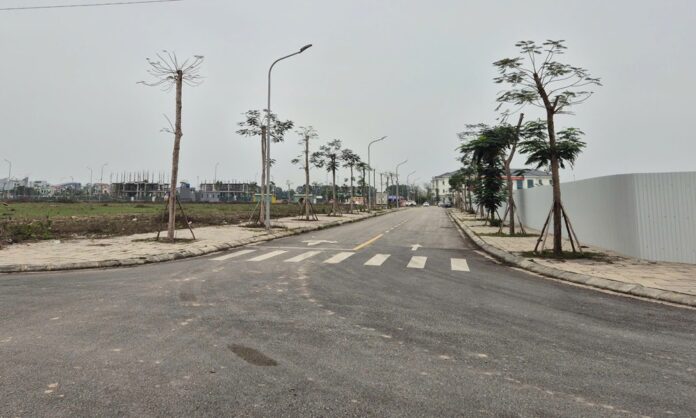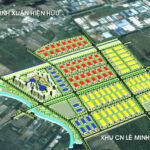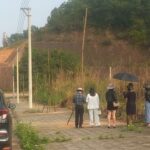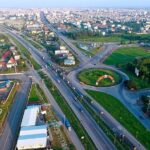Rising Land Prices in Bac Giang
The land market in Bac Giang, a province in northern Vietnam, has witnessed a resurgence since the beginning of this year, after a period of stagnation. This revival can be attributed to several factors, primarily the proposed merger of the province with its neighboring province, Bac Ninh. The potential union has sparked interest in the region, with investors anticipating the formation of a “super industrial hub.”
Additionally, Bac Giang’s thriving industrial and infrastructure development has played a significant role in driving up land prices. Upcoming transportation projects, such as the Belt Road 4 and the expanded Bac Giang-Lang Son highway, along with planned connections to neighboring provinces like Hai Duong and Quang Ninh, are expected to boost the region’s accessibility and economic potential.
The province is also home to several industrial parks, including Quang Chau, Van Trung, and Hoa Phu, which continue to attract foreign direct investment (FDI). This, in turn, fuels the demand for housing, services, and land. The province’s success in attracting FDI and promoting industrial growth serves as a catalyst for the real estate market’s overall expansion, particularly in the land segment.
According to a survey conducted by Batdongsan.com.vn, local brokers reported a price increase of 10-15% in Bac Giang’s land prices compared to the end of last year, with some areas experiencing even higher growth of up to 20%. Transaction volumes have also risen by 20-40% over the past six months.
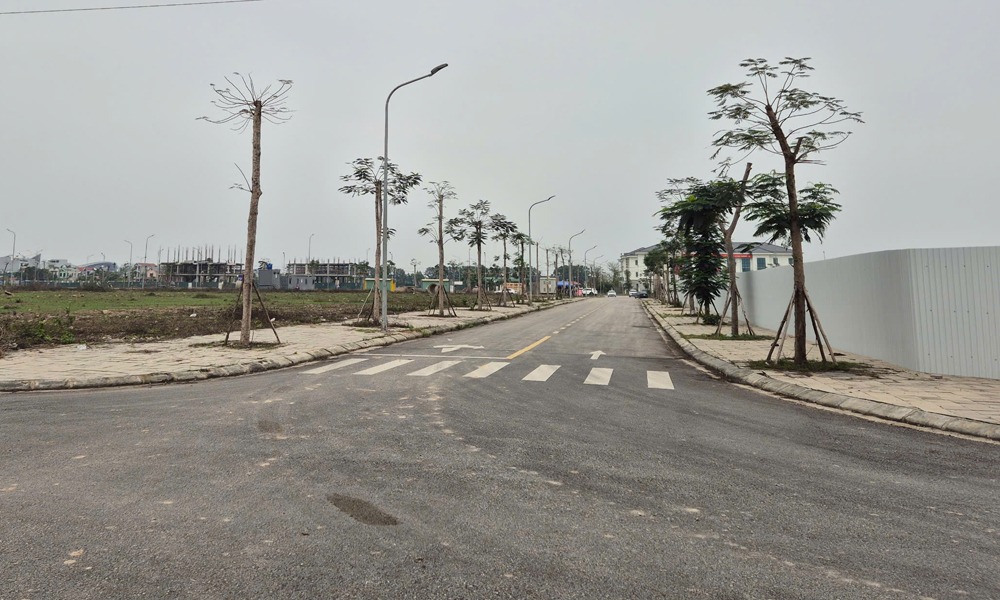
Land in Bac Giang city.
Bac Giang city, the provincial capital, has seen notable increases in land prices across various areas. For instance, land prices in the Ton Duc Thang area, near Big C, have risen from 73-77 million VND per square meter to 84-90 million VND per square meter. In Tan My, near Cho Mia, land prices range from 65-70 million VND per square meter, reflecting a 15% increase since December 2024. Even in less desirable locations within the city, such as Dong Son, land prices have climbed from 27-30 million VND per square meter to 31-36 million VND per square meter over the past six months.
Similar trends can be observed in other parts of the province. In Viet Yen district, land prices near the Van Chau industrial park have increased from 40-43 million VND per square meter to 45-52 million VND per square meter for commercial frontage properties. In Quang Chau, land prices have risen from around 30 million VND per square meter to 34-37 million VND per square meter. Ninh Khanh, located along National Highway 1A in Nen Town, Viet Yen, has also experienced a 15% price increase since November 2024, with land now valued at 55-58 million VND per square meter.
In the town of Thang, located in Hiep Hoa district, land prices for commercial frontage properties have risen from 70-75 million VND per square meter to 80-84 million VND per square meter. Land along National Highway 37 in Thang has also seen a 10% price increase since the Lunar New Year holiday, now ranging from 28-35 million VND per square meter. During the same period, land prices in the Bac Ly residential area have climbed from 38-40 million VND per square meter to 42-44 million VND per square meter.
Local brokers attribute the strong interest in land to investors from Bac Giang, Bac Ninh, and Hanoi, particularly for lots priced between 50-70 million VND per square meter with commercial frontage. These investors are described as sophisticated and cautious, focusing on properties with clear legal titles and well-developed infrastructure or those located near large industrial parks in Bac Giang.
The Emergence of a “Super Industrial Hub”
The prospect of a provincial merger between Bac Giang and Bac Ninh has significantly influenced land prices, especially in areas with high potential within Bac Giang. This interest intensified following the issuance of Resolution 60, which proposes the unification of the two provinces under the name Bac Ninh, with the political and administrative center located in Bac Giang.
Both provinces are renowned for their robust industrial sectors, earning the moniker “industrial hub of Northern Vietnam.” They serve as production bases for numerous global corporations. In 2024, Bac Giang attracted over 2.23 billion USD in FDI, ranking 11th in the country. In the first quarter of 2025, the province approved 20 investment projects, including 11 domestic projects with registered capital of 13,630 billion VND and 9 FDI projects with registered capital of 22.8 million USD.
With 16 industrial parks and 55 industrial clusters, Bac Giang is establishing a comprehensive logistics production chain, especially in districts and towns bordering Bac Ninh, such as Viet Yen, Hiep Hoa, and Lang Giang.
Bac Ninh, despite being the smallest province in Vietnam, boasts a robust economy, ranking 9th in the country. In the first quarter of 2025, Bac Ninh’s economy demonstrated significant improvement, with a 9.64% increase in GRDP compared to the same period last year.
Currently, Bac Ninh has 16 approved industrial parks covering nearly 6,400 hectares, 12 of which are operational with an occupancy rate of over 62%, providing employment opportunities for hundreds of thousands of workers.
The anticipated merger between Bac Giang and Bac Ninh is expected to create a “super industrial hub” in Northern Vietnam, featuring large-scale industrial parks and attracting even more investors.
Investors believe that following the merger, Bac Giang city will become the administrative center, attracting a larger population and stimulating the development of various services. Consequently, the demand for land is expected to increase, driving up land prices even further.
Currently, land prices in Bac Giang remain relatively lower than in neighboring provinces, with the highest price in Bac Giang reaching over 100 million VND per square meter, while some areas in nearby cities have prices as high as 200 million VND per square meter. This disparity has fueled expectations of further land price increases in Bac Giang city.
The City of Ho Chi Minh Unveils Plans for 14 New Industrial Parks
“Ho Chi Minh City embarks on a transformative journey, revolutionizing land use efficiency and reshaping its industrial landscape. With a visionary approach, the city aspires to embrace a greener, more digital and circular future. This dynamic shift paves the way for innovative practices, fostering sustainable growth and a thriving, resilient economy.”
The Urban Jungle: How Abandoned Properties Are Now a Hot Commodity
Recently, several residential areas in Yen Bai Province, which were once deserted, have witnessed a surprising surge in interest from potential customers and investors alike. This sudden influx has resulted in a notable increase in land inquiries, transactions, and a daily rise in land prices ranging from 15% to 30% in certain areas. Amidst this wave of enthusiasm, experts advise investors to exercise caution and remain vigilant in the face of this rapidly developing “hot trend.”
The Future of Dong Nai: A 4-Trillion VND Road Project Unveiled, Connecting Counties to the $16 Billion “Mega Project”
The DT 773 road upgrade and expansion project spans almost 40 kilometers in length. Upon completion, this project will facilitate connectivity between Xuan Loc, Cam My, and Long Thanh districts, as well as the Central Highlands and South-Central regions, providing a crucial link to the Long Thanh “mega-airport” project.

